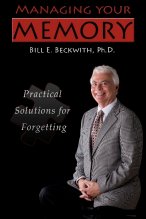Top Memory Stories for 2012
What have we learned about memory disorders and Alzheimer’s disease over the past year?
1. Despite the increasing pressure to use PET scans to diagnose Alzheimer’s disease the results may be misleading. About two thirds of community dwelling participants were misdiagnosed with Alzheimer’s disease based on positron emission tomography scan readings using amyloid-specific tracers. We need to be cautious about using brain scans to make a diagnosis of Alzheimer’s disease. Studies used to make the case for the accuracy of scans have so far only used highly selected participants – a sampling bias that may distort results.
2. Janssen released results from trials on a compound named bapibrzumab, which is a monoclonal antibody that is meant to decrease amyloid production thereby modifying the progression of Alzheimer’s disease. The 18-month trial in patients with mild to moderate disease was stopped because of ineffectiveness of the compound. This adds to the growing number of disappointing studies employing amyloid lowering strategies to treat Alzheimer’s disease.
3. Medications such as Aricept and Namenda continue to work in moderate to severe Alzheimer’s disease. Continued treatment with Aricept or Namenda maintained skills better than those who were taken off these medications nearly a year later. Those who switched from Aricept to Namenda were also better than those switched to a placebo. The combination of Aricept and Namenda was no better than either alone.
4. Alzheimer’s disease unfolds over the course of decades. The Dominantly Inherited Alzheimer’s Network study of these high-risk individuals completed numerous baseline and clinical/cognitive assessments on those enrolled in their data bank. The following timeline emerged:
1) Concentrations of amyloid and tau proteins were elevated 25 years before the onset of symptoms in carriers.
2) Siblings without the mutant gene had no detected change in these markers.
3) Imaging studies detected amyloid and tau deposition in the brain 15 years before symptoms.
4) Memory loss and cerebral hypometabolism were detected 10 years before symptoms.
5) Changes in the Mini-Mental State scores were not seen until 5 years before expected symptom onset.
5. Memory training helps recovery after heart surgery. Memory training consists of use of external memory support (a specific application of the One Minute Rule) and attention training (computer speed games). Recovering patients who completed memory training showed enhanced memory as well as improved reaction times.
6. High levels of physical activity reduce brain atrophy and white matter damage. Interestingly, leisure activity and stimulation do not alter brain volume or white matter disease.
Bottom line: we need to broaden our thinking. Amyloids are not the necessary cause of Alzheimer’s disease, which develops and progresses over the course of at least 2-3 decades. Other treatment approaches need to be evaluated – including nondrug treatments. The current medications do not quit working and should be continued once started. Memory evaluation, adopting the One Minute Rule, and physical conditioning are our best bets for maintaining our brains as we age and should be a part of wellness at least as early as middle age.




